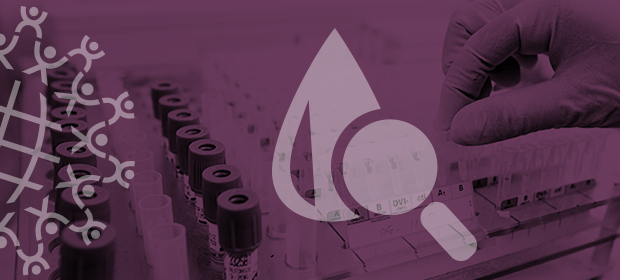Where We Work
See our interactive map


A year ago, who would have thought that Ebola would be a hot topic on World AIDS Day 2014?
Today, the Ebola outbreak has spread to over 15,000 people, and Ebola and HIV have become unlikely bedfellows. The Ebola epidemic is not only disrupting HIV treatment for people who need it, it’s also reminding the global health community of the many missteps and lessons we learned during the early response to HIV.
“In the 30 years I've been working in public health, the only thing like [this Ebola outbreak] has been AIDS,” said director of the US Centers for Disease Control and Prevention Tom Frieden in October. “We have to work now so this is not the world’s next AIDS.”
One virus is a marathoner, the other a sprinter.
One virus is a marathoner, the other a sprinter. AIDS has claimed more than 39 million lives since the epidemic began in the early 1980s. This Ebola outbreak has claimed over 5,400 in less than a year. But both have generated fear, stigma, and dangerous misinformation.
HIV Care Interrupted in Ebola Outbreak Areas
According to UNAIDS, there are about 210,000 people living with HIV and 50,000 receiving antiretroviral therapy (ART) in the three countries most affected by Ebola: Guinea, Liberia, and Sierra Leone. Some facilities that provided ART are no longer functioning in Sierra Leone, UNAIDS says, and in all three countries, the number of people using health facilities for HIV and other health services has declined drastically.
People living with HIV—and especially those on treatment—must have continuous access to health services. When ART is abruptly halted, patients could become unwell, they may be more likely to transmit the virus, and they may form a resistance to their HIV drugs. Fortunately, UNAIDS and other organizations are working to make sure people living with HIV get the care they need, even in Ebola-affected areas, by:
The UNAIDS Inter Agency Task Team to address HIV in Humanitarian Emergencies is advocating for a minimum HIV service package as part of efforts to restore public health services during this outbreak.
The service package includes guidelines for using community platforms to distribute ART and recommends using mobile platforms to communicate about which facilities are open and able to provide HIV services.
Using What Works
Strong knowledge management processes and coherent communication are essential if all of us—international and private donors, implementing agencies, and local governments and organizations—are to work together to stop the Ebola outbreak and minimize the disruption to HIV and other health services. We need to offer information that is clear, concise, and efficient, so as not to overwhelm those who are working relentlessly on the ground.
Ebola is happening in a world of unprecedented, instant, real-time connectivity.
Plenty of information and tools are already available to help public health officials, health workers, and community leaders understand and address the Ebola outbreak. Aggregating, evaluating, synthesizing, and repackaging or translating existing information resources can help countries move quickly and efficiently rather than wasting time reinventing the wheel.
If countries and organizations could have shared resources and approaches in real time so freely back in the early 1980s, would the HIV response have been more effective? We’ll never know.
But we do know that in today’s world of interconnectivity, we have that luxury and need to use it.
Ebola Resources for Health Workers and the Ebola Communication Network are both designed to quickly connect users to vetted, high-quality resources that they can adapt to different contexts and audiences.
Health workers especially need reliable, real-time information amid global epidemics, and they need it quickly and concisely. Mobile platforms such as mHero can improve two-way communication between health workers and government officials and make a huge difference right now during outbreak.
These same platforms can also be used to target messages about sustaining HIV and other services now and into the future.
Closing the Gap
Just like with HIV, stigma and fear around Ebola are fueling misinformation that cannot be overcome without champions of accurate knowledge.
Unlike in the early days of the HIV epidemic, Ebola is happening in a world of unprecedented, instant, real-time connectivity. Many organizations have come together from around the world to share what’s working, what’s not, and their expertise with others who can use it.
In a time of such rapid information exchange, we must also take the time to evaluate and share what we’re learning with each other along the way.
The wrong approaches can, at best, waste time—and at worst, lives.
The right information delivered effectively can empower people everywhere to overcome fear and access the services they need—closing the gap between those who need treatment and those who have it.
The wrong approaches can, at best, waste time—and at worst, lives.
Before it’s over, Ebola will disrupt the health of many HIV-positive individuals. But HIV taught us a few things about how to contain outbreaks, even if it is a challenge. Today we know how to spread accurate information. We know how to reduce stigma. And we know how to put people first and empower everyone to be part of the solution to end both Ebola and HIV.
Together, we can do better than identify the gap. We can close the gap.
Get the latest updates from the blog and eNews




